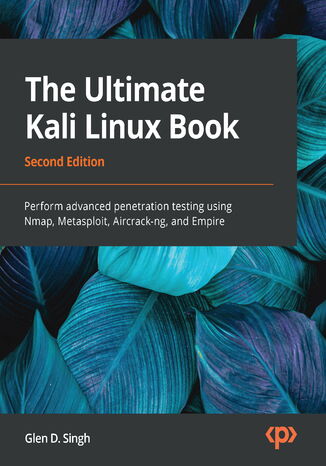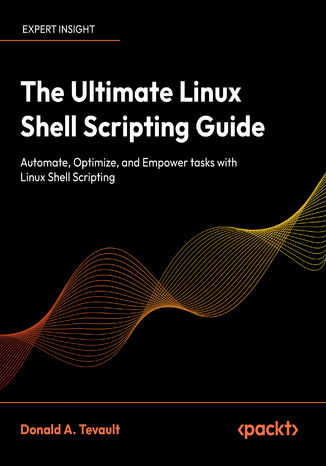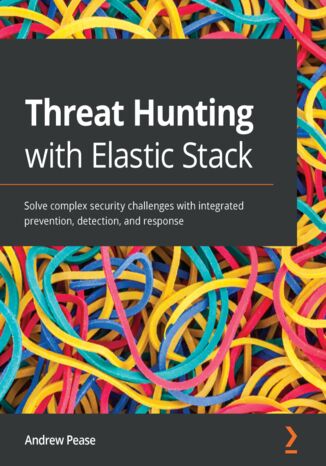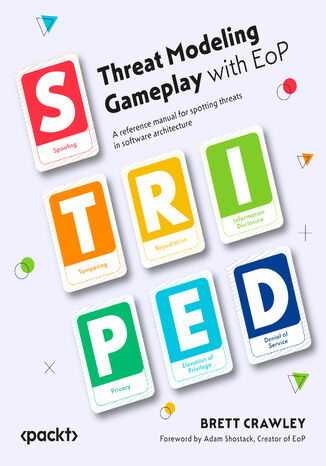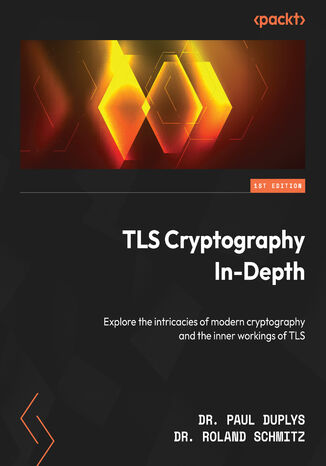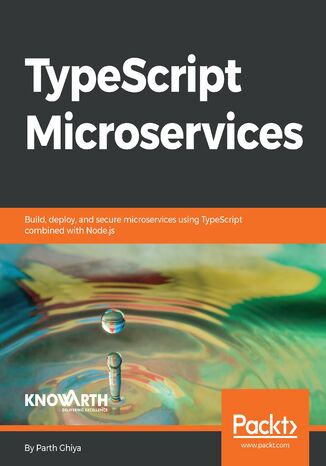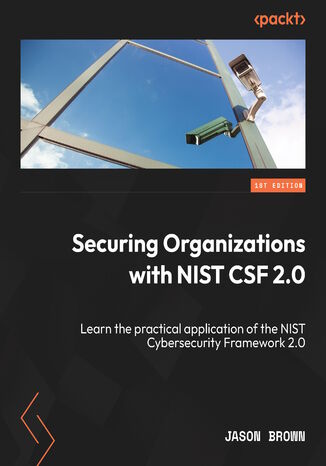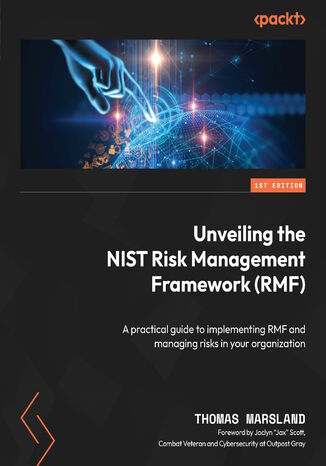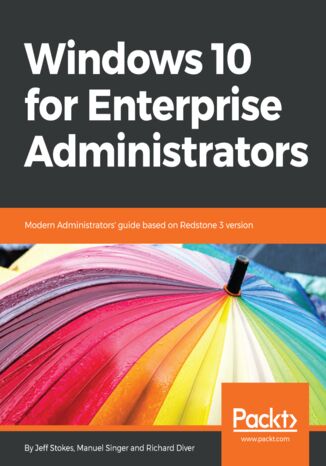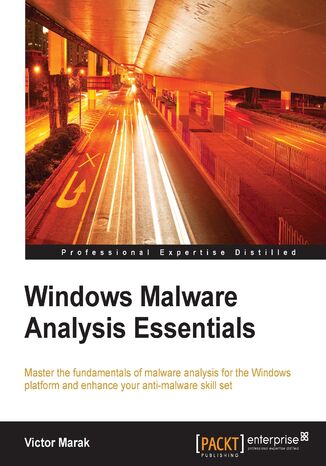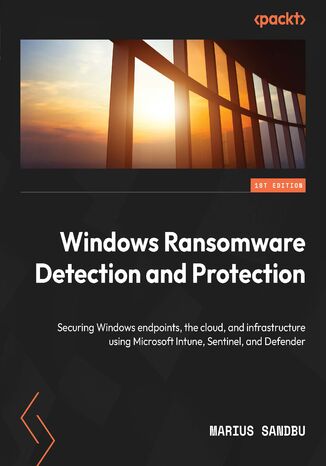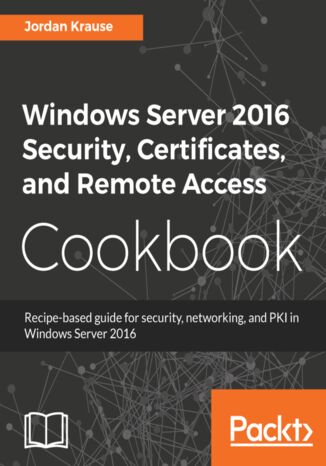Kategorie
-
- Bitcoin
- Bizneswoman
- Coaching
- Controlling
- E-biznes
- Ekonomia
- Finanse
- Giełda i inwestycje
- Kompetencje osobiste
- Komputer w biurze
- Komunikacja i negocjacje
- Mała firma
- Marketing
- Motywacja
- Multimedialne szkolenia
- Nieruchomości
- Perswazja i NLP
- Podatki
- Polityka społeczna
- Poradniki
- Prezentacje
- Przywództwo
- Public Relation
- Raporty, analizy
- Sekret
- Social Media
- Sprzedaż
- Start-up
- Twoja kariera
- Zarządzanie
- Zarządzanie projektami
- Zasoby ludzkie (HR)
-
- Architektura i wnętrza
- BHP
- Biznes i Ekonomia
- Dom i ogród
- E-Biznes
- Ekonomia i finanse
- Ezoteryka
- Finanse
- Finanse osobiste
- Firma
- Fotografia
- Informatyka
- Kadry i płace
- Kobieca
- Komputery, Excel
- Księgowość
- Kultura i literatura
- Naukowe i akademickie
- Ochrona środowiska
- Opiniotwórcze
- Oświata
- Podatki
- Podróże
- Psychologia
- Religia
- Rolnictwo
- Rynek książki i prasy
- Transport i Spedycja
- Zdrowie i uroda
-
- Aplikacje biurowe
- Bazy danych
- Bioinformatyka
- Biznes IT
- CAD/CAM
- Digital Lifestyle
- DTP
- Elektronika
- Fotografia cyfrowa
- Grafika komputerowa
- Gry
- Hacking
- Hardware
- IT w ekonomii
- Pakiety naukowe
- Podręczniki szkolne
- Podstawy komputera
- Programowanie
- Programowanie mobilne
- Serwery internetowe
- Sieci komputerowe
- Start-up
- Systemy operacyjne
- Sztuczna inteligencja
- Technologia dla dzieci
- Webmasterstwo
-
- Antologie
- Ballada
- Biografie i autobiografie
- Dla dorosłych
- Dramat
- Dzienniki, pamiętniki, listy
- Epos, epopeja
- Esej
- Fantastyka i science-fiction
- Felietony
- Fikcja
- Humor, satyra
- Inne
- Klasyczna
- Kryminał
- Literatura faktu
- Literatura piękna
- Mity i legendy
- Nobliści
- Nowele
- Obyczajowa
- Okultyzm i magia
- Opowiadania
- Pamiętniki
- Podróże
- Poemat
- Poezja
- Polityka
- Popularnonaukowa
- Powieść
- Powieść historyczna
- Proza
- Przygodowa
- Publicystyka
- Reportaż
- Romans i literatura obyczajowa
- Sensacja
- Thriller, Horror
- Wywiady i wspomnienia
-
- Archeologia
- Bibliotekoznawstwo
- Filmoznawstwo
- Filologia
- Filologia polska
- Filozofia
- Finanse i bankowość
- Geografia
- Gospodarka
- Handel. Gospodarka światowa
- Historia i archeologia
- Historia sztuki i architektury
- Kulturoznawstwo
- Lingwistyka
- Literaturoznawstwo
- Logistyka
- Matematyka
- Medycyna
- Nauki humanistyczne
- Pedagogika
- Pomoce naukowe
- Popularnonaukowa
- Pozostałe
- Psychologia
- Socjologia
- Teatrologia
- Teologia
- Teorie i nauki ekonomiczne
- Transport i spedycja
- Wychowanie fizyczne
- Zarządzanie i marketing
-
- BHP
- Historia
- Kodeks drogowy. Prawo jazdy
- Nauki prawne
- Ochrona zdrowia
- Ogólne, kompendium wiedzy
- Podręczniki akademickie
- Pozostałe
- Prawo budowlane i lokalowe
- Prawo cywilne
- Prawo finansowe
- Prawo gospodarcze
- Prawo gospodarcze i handlowe
- Prawo karne
- Prawo karne. Przestępstwa karne. Kryminologia
- Prawo międzynarodowe
- Prawo międzynarodowe i zagraniczne
- Prawo ochrony zdrowia
- Prawo oświatowe
- Prawo podatkowe
- Prawo pracy i ubezpieczeń społecznych
- Prawo publiczne, konstytucyjne i administracyjne
- Prawo rodzinne i opiekuńcze
- Prawo rolne
- Prawo socjalne, prawo pracy
- Prawo Unii Europejskiej
- Przemysł
- Rolne i ochrona środowiska
- Słowniki i encyklopedie
- Zamówienia publiczne
- Zarządzanie
-
- Afryka
- Albumy
- Ameryka Południowa
- Ameryka Środkowa i Północna
- Australia, Nowa Zelandia, Oceania
- Austria
- Azja
- Bałkany
- Bliski Wschód
- Bułgaria
- Chiny
- Chorwacja
- Czechy
- Dania
- Egipt
- Estonia
- Europa
- Francja
- Góry
- Grecja
- Hiszpania
- Holandia
- Islandia
- Litwa
- Łotwa
- Mapy, Plany miast, Atlasy
- Miniprzewodniki
- Niemcy
- Norwegia
- Podróże aktywne
- Polska
- Portugalia
- Pozostałe
- Przewodniki po hotelach i restauracjach
- Rosja
- Rumunia
- Słowacja
- Słowenia
- Szwajcaria
- Szwecja
- Świat
- Turcja
- Ukraina
- Węgry
- Wielka Brytania
- Włochy
-
- Filozofie życiowe
- Kompetencje psychospołeczne
- Komunikacja międzyludzka
- Mindfulness
- Ogólne
- Perswazja i NLP
- Psychologia akademicka
- Psychologia duszy i umysłu
- Psychologia pracy
- Relacje i związki
- Rodzicielstwo i psychologia dziecka
- Rozwiązywanie problemów
- Rozwój intelektualny
- Sekret
- Seksualność
- Uwodzenie
- Wygląd i wizerunek
- Życiowe filozofie
-
- Bitcoin
- Bizneswoman
- Coaching
- Controlling
- E-biznes
- Ekonomia
- Finanse
- Giełda i inwestycje
- Kompetencje osobiste
- Komunikacja i negocjacje
- Mała firma
- Marketing
- Motywacja
- Nieruchomości
- Perswazja i NLP
- Podatki
- Polityka społeczna
- Poradniki
- Prezentacje
- Przywództwo
- Public Relation
- Sekret
- Social Media
- Sprzedaż
- Start-up
- Twoja kariera
- Zarządzanie
- Zarządzanie projektami
- Zasoby ludzkie (HR)
-
- Antologie
- Ballada
- Biografie i autobiografie
- Dla dorosłych
- Dramat
- Dzienniki, pamiętniki, listy
- Epos, epopeja
- Esej
- Fantastyka i science-fiction
- Felietony
- Fikcja
- Humor, satyra
- Inne
- Klasyczna
- Kryminał
- Literatura faktu
- Literatura piękna
- Mity i legendy
- Nobliści
- Nowele
- Obyczajowa
- Okultyzm i magia
- Opowiadania
- Pamiętniki
- Podróże
- Poezja
- Polityka
- Popularnonaukowa
- Powieść
- Powieść historyczna
- Proza
- Przygodowa
- Publicystyka
- Reportaż
- Romans i literatura obyczajowa
- Sensacja
- Thriller, Horror
- Wywiady i wspomnienia
-
- Filozofie życiowe
- Komunikacja międzyludzka
- Mindfulness
- Ogólne
- Perswazja i NLP
- Psychologia akademicka
- Psychologia duszy i umysłu
- Psychologia pracy
- Relacje i związki
- Rodzicielstwo i psychologia dziecka
- Rozwiązywanie problemów
- Rozwój intelektualny
- Sekret
- Seksualność
- Uwodzenie
- Wygląd i wizerunek
- Życiowe filozofie
Bezpieczeństwo systemów
Journey into the world of Kali Linux – the central hub for advanced penetration testing, with this ultimate guide to exposing security vulnerabilities in websites and both wired and wireless enterprise networks.With real-world scenarios, practical steps and coverage of popular tools, this third edition of the bestselling Ultimate Kali Linux Book is your fast track to learning penetration testing with Kali Linux 2024.x. As you work through the book, from preliminary penetration testing activities through performing network and website penetration testing, to exploring Active Directory and social engineering attacks, you’ll discover the range of vulnerability assessment tools in Kali Linux, building your confidence and proficiency as a penetration tester or ethical hacker.This new edition of the book features a brand new chapter on Open Source Intelligence (OSINT), as well as new labs on web applications and social engineering. Procedures for building virtual labs have also been improved, making these easier to understand and follow.Think of this book as your stepping stone into the modern world of penetration testing and ethical hacking – with the practical guidance and industry best practices the book provides, you’ll be ready to tackle real-world cybersecurity challenges head-on.
Kali Linux is the most popular and advanced penetration testing Linux distribution within the cybersecurity industry. Using Kali Linux, a cybersecurity professional will be able to discover and exploit various vulnerabilities and perform advanced penetration testing on both enterprise wired and wireless networks. This book is a comprehensive guide for those who are new to Kali Linux and penetration testing that will have you up to speed in no time. Using real-world scenarios, you’ll understand how to set up a lab and explore core penetration testing concepts. Throughout this book, you’ll focus on information gathering and even discover different vulnerability assessment tools bundled in Kali Linux. You’ll learn to discover target systems on a network, identify security flaws on devices, exploit security weaknesses and gain access to networks, set up Command and Control (C2) operations, and perform web application penetration testing. In this updated second edition, you’ll be able to compromise Active Directory and exploit enterprise networks. Finally, this book covers best practices for performing complex web penetration testing techniques in a highly secured environment. By the end of this Kali Linux book, you’ll have gained the skills to perform advanced penetration testing on enterprise networks using Kali Linux.
Dive into the world of Linux shell scripting with this hands-on guide. If you’re comfortable using the command line on Unix or Linux but haven’t fully explored Bash, this book is for you. It’s designed for programmers familiar with languages like Python, JavaScript, or PHP who want to make the most of shell scripting.This isn’t just another theory-heavy book—you’ll learn by doing. Each chapter builds on the last, taking you from shell basics to writing practical scripts that solve real-world problems. With nearly a hundred interactive labs, you’ll gain hands-on experience in automation, system administration, and troubleshooting.While Bash is the primary focus, you'll also get a look at Z Shell and PowerShell, expanding your skills and adaptability. From mastering command redirection and pipelines to writing scripts that work across different Unix-like systems, this book equips you for real-world Linux challenges.By the end, you'll be equipped to write efficient shell scripts that streamline your workflow and improve system automation.
Threat Hunting with Elastic Stack will show you how to make the best use of Elastic Security to provide optimal protection against cyber threats. With this book, security practitioners working with Kibana will be able to put their knowledge to work and detect malicious adversary activity within their contested network.You'll take a hands-on approach to learning the implementation and methodologies that will have you up and running in no time. Starting with the foundational parts of the Elastic Stack, you'll explore analytical models and how they support security response and finally leverage Elastic technology to perform defensive cyber operations.You’ll then cover threat intelligence analytical models, threat hunting concepts and methodologies, and how to leverage them in cyber operations. After you’ve mastered the basics, you’ll apply the knowledge you've gained to build and configure your own Elastic Stack, upload data, and explore that data directly as well as by using the built-in tools in the Kibana app to hunt for nefarious activities.By the end of this book, you'll be able to build an Elastic Stack for self-training or to monitor your own network and/or assets and use Kibana to monitor and hunt for adversaries within your network.
Threat Modeling Gameplay with EoP. A reference manual for spotting threats in software architecture
Are you looking to navigate security risks, but want to make your learning experience fun? Here's a comprehensive guide that introduces the concept of play to protect, helping you discover the threats that could affect your software design via gameplay.Each chapter in this book covers a suit in the Elevation of Privilege (EoP) card deck (a threat category), providing example threats, references, and suggested mitigations for each card. You’ll explore the methodology for threat modeling—Spoofing, Tampering, Repudiation, Information Disclosure, and Elevation of Privilege (S.T.R.I.D.E.) with Privacy deck and the T.R.I.M. extension pack. T.R.I.M. is a framework for privacy that stands for Transfer, Retention/Removal, Inference, and Minimization. Throughout the book, you’ll learn the meanings of these terms and how they should be applied. From spotting vulnerabilities to implementing practical solutions, the chapters provide actionable strategies for fortifying the security of software systems.By the end of this book, you will be able to recognize threats, understand privacy regulations, access references for further exploration, and get familiarized with techniques to protect against these threats and minimize risks.
Dr. Paul Duplys, Dr. Roland Schmitz
TLS is the most widely used cryptographic protocol today, enabling e-commerce, online banking, and secure online communication. Written by Dr. Paul Duplys, Security, Privacy & Safety Research Lead at Bosch, and Dr. Roland Schmitz, Internet Security Professor at Stuttgart Media University, this book will help you gain a deep understanding of how and why TLS works, how past attacks on TLS were possible, and how vulnerabilities that enabled them were addressed in the latest TLS version 1.3. By exploring the inner workings of TLS, you’ll be able to configure it and use it more securely.Starting with the basic concepts, you’ll be led step by step through the world of modern cryptography, guided by the TLS protocol. As you advance, you’ll be learning about the necessary mathematical concepts from scratch. Topics such as public-key cryptography based on elliptic curves will be explained with a view on real-world applications in TLS. With easy-to-understand concepts, you’ll find out how secret keys are generated and exchanged in TLS, and how they are used to creating a secure channel between a client and a server.By the end of this book, you’ll have the knowledge to configure TLS servers securely. Moreover, you’ll have gained a deep knowledge of the cryptographic primitives that make up TLS.
TWOJE BEZPIECZEŃSTWO W ŚWIECIE CYBER I AI Część 2 Cyberhigiena 2025
Ten ebook to drugie wydanie tej pozycji wydawniczej - poprawione i zaktualizowane - od kuchni :). Dzięki temu jest zdecydowanie bardziej adekwatny do stanu wiedzy datowanej na 2025 rok. Czy można połączyć cyberhigienę z gotowaniem? Oczywiście, że tak! W końcu zarówno w kuchni, jak i w świecie cyfrowym zasady (szczególnie związane z czystością 😄) są kluczowe. A ja, jako osoba, która przepisy - uwielbia tworzyć i stosować (co możecie zobaczyć na moim kanale YT @poswojsku), wiem o tym doskonale. Przykład? Cyberbezpieczeństwo to jak przepis na dobre pierogi. Jeśli: masz porządne składniki (odpowiednik w cyberhigienie - silne hasła), dobrze wyrobiłeś/aś ciasto (odpowiednik w cyberhigienie - regularne aktualizacje), nie dajesz się oszukać podejrzanym "domowym" farszom (odpowiednik w cyberhigienie - phishing i fałszywe strony), to wszystko powinno wyjść znakomicie, czyli bardzo smacznie i bezpiecznie 😄 ! Ale jeżeli zignorujesz podstawowe zasady... cóż, zamiast smacznej uczty możesz skończyć z katastrofą w kuchni, albo zhakowanym komputerem w sieci. Właśnie dlatego powstał ten poradnik - żebyś nie serwował/a w swoim cyfrowym życiu żadnych "zatrutych potraw". Moim celem jest pokazanie właśnie Tobie, że cyberhigiena to nie jakiś nudny wykład o hasłach i wirusach, tylko praktyczna wiedza, którą możesz ( i powinieneś/naś! ) stosować na co dzień. A wówczas możesz zostać superbohaterem lub superbohaterką cyfrowego imperium. Hmm, a może nawet Szefem/ową Cyber Kuchni? ;) Cyberhigiena to nie jednorazowa akcja, ale codzienny nawyk - jak mycie rąk po wyjściu z toalety. Jeśli nie chcesz, żeby Twój komputer (albo konto bankowe) zostały "zainfekowane", stosuj te (i wiele innych) zasady regularnie. Dbaj o siebie, swoje dane oraz hasła - i pamiętaj: świadomy użytkownik to najlepsza zapora przed cyberzagrożeniami! 🔥🔒 Do zobaczenia po bezpiecznej stronie internetu! 🚀😃 AUTOR - DARIUSZ GOŁĘBIOWSKI 🔥 Czy Twoja cyberhigiena jest lepsza niż higiena rąk? Sprawdź i nie daj się "cyfrowym zarazkom"! 🦠💻 Czy zastanawiałeś się kiedyś, jak higieniczny jest Twój sposób korzystania z internetu? Myjesz ręce przed jedzeniem, ale... czy dbasz o swoje hasła tak samo? Czy Twoja cyberhigiena to poziom sterylnego laboratorium, czy raczej "szybkie przepłukanie rąk po obiedzie"? 🤔💦 Jeśli nie chcesz, żeby Twoje konto bankowe zniknęło szybciej niż ciasto na rodzinnym spotkaniu 🍰💨, to ten ebook jest dla Ciebie! 📌 CO ZNAJDZIESZ W ŚRODKU? ✅ Jak rozpoznać, że ktoś właśnie robi z Twojego konta bufet all-inclusive dla hakerów 🤯🔓 ✅ Jak stworzyć hasło tak silne, że nawet AI się podda? (Nie, "Kasia123" to nie jest dobra opcja). 🔐 ✅ Dlaczego otwarte WiFi to jak darmowy sushi bar w podejrzanej dzielnicy? 🍣💀 ✅ Jak nie dać się phishingowi i nie kliknąć w "Pilnie! Twój bank chce Ci oddać pieniądze!"? 🏦🎣 ✅ Sztuczna inteligencja - Twój cyfrowy ochroniarz czy cyberprzestępca na sterydach? 🤖⚔️ ✅ Co wspólnego mają kuchenne przepisy i bezpieczne przetwarzanie danych? 👨🍳🔒 📌 DLA KOGO JEST TEN PORADNIK? ✔ Dla tych, którzy nie chcą, żeby ich komputer przeszedł na ciemną stronę mocy. 🌑 ✔ Dla każdego, kto loguje się do banku, social mediów i skrzynki e-mail (czyli... tak, dla Ciebie też!). ✔ Dla tych, którzy chcą bezpiecznie korzystać z internetu, zamiast zastanawiać się "co mogło pójść nie tak". 📌 DLACZEGO WARTO? 😆 Bez technicznego bełkotu - bo cyberbezpieczeństwo nie musi brzmieć jak wykład dla hakerów z NASA! 😂 Z humorem - bo lepiej uczyć się i śmiać, niż uczyć się i płakać, że ktoś ukradł Ci konto. 🚀 Praktycznie i konkretnie - zero lania wody, tylko porady, które możesz wdrożyć od razu. 📢 NIE CZEKAJ, AŻ CYBERZŁODZIEJE STANĄ W TWOICH CYFROWYCH DRZWIACH! Kup ebooka teraz i stań się cyfrowym ninja bezpieczeństwa! 🥷🔐 👉 KUP TERAZ - ZADBAJ O SWOJĄ CYBERHIGIENĘ! 👈
Twoje bezpieczeństwo w świecie cyber i sztucznej inteligencji Część 2 Cyberhigiena
Twoje bezpieczeństwo w świecie cyber i sztucznej inteligencji: Odkryj klucz do cyberhigieny z nową książką! W erze cyfrowej, gdzie nasze dane są tak cenne jak złoto, a cyberzagrożenia czają się na każdym kroku, niezbędne jest wyposażenie się w wiedzę, która ochroni nasze cyfrowe życie. "Twoje bezpieczeństwo w świecie cyber i sztucznej inteligencji: Część II - Cyberhigiena" to praktyczny przewodnik, który stanie się Twoją cyfrową tarczą. Ta książka to nie tylko teoria - to zbiór konkretnych porad, technik i rozwiązań, które pomogą Ci zidentyfikować, zapobiegać i chronić się przed cyberzagrożeniami. Dowiesz się, jak rozpoznać atak hakerski, jak bezpiecznie przechowywać i udostępniać dane, a także jak inteligentnie korzystać z mediów społecznościowych i smartfonów, nie narażając się na niebezpieczeństwo. Autor, wykorzystując swoje bogate doświadczenie, zapewnia czytelnikom szczegółowe informacje o najczęstszych cyberzagrożeniach, w tym o atakach socjotechnicznych i technikach phishingu, a także o tym, jak sztuczna inteligencja może stać się narzędziem w rękach cyberprzestępców. "Twoje bezpieczeństwo w świecie cyber i sztucznej inteligencji" to nie tylko lektura obowiązkowa dla profesjonalistów IT, ale przede wszystkim dla każdego użytkownika internetu. To kompendium wiedzy, które przyda się w domu, pracy i podróży, chroniąc Twoje cyfrowe ślady i zapewniając spokój ducha w świecie pełnym cyfrowych zagrożeń. Zabezpiecz się już dziś - odkryj "Część II - Cyberhigiena" i zacznij budować swoją cyfrową odporność. Zamów swoją kopię już teraz i zrób kolejny krok w kierunku bezpiecznej przyszłości! Cyfrowy świat jest pełen zagrożeń, ale dzięki tej książce będziesz mógł ich uniknąć! W "Części II serii poradników - Cyberhigiena" - autor rozszerza wiedzę zaprezentowaną w pierwszym tomie, przechodząc do szczegółowych strategii i technik niezbędnych do ochrony Twojej cyfrowej tożsamości. Ta książka jest nieocenionym zasobem dla każdego, kto chce zrozumieć i zapobiegać zagrożeniom płynącym z cyberprzestrzeni. W dzisiejszym świecie, gdzie każde nasze kliknięcie w sieci może stać się przyczynkiem do ataku, kluczowe staje się zrozumienie i zastosowanie zasad cyberhigieny. "Twoje bezpieczeństwo w świecie cyber i sztucznej inteligencji: Część II - Cyberhigiena" to esencjonalna lektura, która wyposaży Cię w praktyczną wiedzę niezbędną do ochrony Twojej cyfrowej tożsamości. Rozdział 1: Wejdź w świat cyberbezpieczeństwa przez praktyczne zasady cyberhigieny. Naucz się rozpoznawać sygnały ostrzegawcze cyberataku i odkryj metody profilaktyki, które pomogą Ci uniknąć niebezpieczeństw. Rozdział 2: Zanurz się w analizie najczęstszych cyberzagrożeń. Od personalno-mentalnościowych aspektów bezpieczeństwa, poprzez socjotechniczne pułapki, po wyrafinowane metody phishingu oraz zagrożenia płynące z fałszywych stron internetowych i otwartych sieci. Rozdział 3: Zbuduj swoją linię obrony z naszymi sprawdzonymi sposobami ochrony przed cyberzagrożeniami. Znajdziesz tu konkretne strategie ochrony przed atakami socjotechnicznymi i technicznymi, porady dotyczące bezpiecznej pracy zdalnej oraz wskazówki dotyczące higieny cyfrowej w podróży. Ta książka to nieoceniony zbiór wiedzy dla każdego, kto chce aktywnie i skutecznie dbać o swoje cyfrowe bezpieczeństwo. Niezależnie od tego, czy jesteś doświadczonym użytkownikiem IT, czy dopiero zaczynasz swoją przygodę z technologią, znajdziesz tu bezcenne wskazówki, które pomogą uchronić Ciebie oraz Twoich najbliższych przed negatywnymi konsekwencjami niepożądanych działań w internecie.
Twoje bezpieczeństwo w świecie cyber i sztucznej inteligencji Część I Wprowadzenie
Kupując Część 1 ebooka, nie zapomniej o kolejnych, w tym: Część 2 CYBERHIGIENA - już w sprzedaży,a Część 3 Dziecko i Ty - będzie dostępna od 06 maja. W erze cyfrowej, gdy nasze życie coraz bardziej zależy od połączeń internetowych, a zagrożenia wirtualne stają się równie realne, co te fizyczne, książka taka jak "Twoje bezpieczeństwo w świecie cyber i sztucznej inteligencji" staje się nie tylko przydatna, ale wręcz niezbędna. Autor tego poradnika, z niezwykłą precyzją i zrozumieniem, wprowadza czytelnika w zawiłości cyberbezpieczeństwa oraz sztucznej inteligencji, a robi to w sposób, który jest zarówno edukacyjny, jak i niezwykle wciągający. Rozdział 1 jest niczym solidne fundamenty bezpieczeństwa cyfrowego. Czytelnik znajdzie tu klarownie wyjaśnione podstawowe pojęcia związane z cyberbezpieczeństwem, a także przegląd potencjalnych zagrożeń czających się w cyfrowym mroku. Autor wykazuje się dużą wiedzą na temat różnych systemów operacyjnych, analizując ich słabe i mocne strony. Sposób, w jaki omawia temat sztucznej inteligencji, balansując między jej możliwościami a zagrożeniami, jest zarówno oświecający, jak i dobrze przemyślany. Rozdział 2 to prawdziwa kopalnia wiedzy dla każdego, kto chciałby zrozumieć, jak działają narzędzia do hakowania oraz jak można się przed nimi bronić. Co więcej, omówienie aspektów prawnych cyberbezpieczeństwa, w tym podstaw Dyrektywy NIS 2, jest nie tylko użyteczne, ale i niezwykle aktualne. Co najbardziej urzekło mnie w tym poradniku, to nie tylko bogactwo informacji, ale także styl, w jakim zostały one przekazane. Autor, z lekkością godną wytrawnego pisarza, prowadzi nas przez skomplikowane kwestie techniczne, nie tracąc przy tym na lekkości narracji. Jest to rzadkość w literaturze fachowej, która często bywa sucha i odstraszająca. "Twoje bezpieczeństwo w świecie cyber i sztucznej inteligencji" to lektura obowiązkowa dla każdego, kto chce bezpiecznie poruszać się po cyfrowych wodach współczesności. To nie tylko podręcznik, to przewodnik po nowoczesnym świecie, który każdy z nas powinien mieć zawsze pod ręką. Niezależnie od tego, czy jesteś początkującym użytkownikiem internetu, czy doświadczonym informatykiem, ten poradnik z pewnością wzbogaci Twoją wiedzę i umiejętności w dziedzinie cyberbezpieczeństwa. Wkrocz do cyfrowego świata z szeroko otwartymi oczami, a do tego z należytą ostrożnością. W tej książce: odkryjesz mroczne zakamarki cyberświata oraz sztucznej inteligencji, zdobędziesz wiedzę, która ochroni Cię przed licznymi cyberzagrożeniami. Cyberbezpieczeństwo (a może raczej - cyberniebezpieczeństwo?) to nieustanny proces. W dzisiejszych czasach każdy z nas jest narażony na ataki różnego rodzaju hakerów oraz złośliwego oprogramowania. Ten poradnik wyposaży Cię w niezbędne: narzędzia, wiedzę oraz umiejętności, abyś mógł/ogła bezpiecznie poruszać się w cyfrowej rzeczywistości. Podróż przez ten poradnik - Część I Wprowadzenie, Część II Cyberhigiena, Część III Dziecko i Ty - ujawni - specjalnie dla Ciebie: Potęgę sztucznej inteligencji w rękach hakerów: odkryjesz jej niesamowite możliwości oraz, niestety, zagrożenia, jakie niesie dla Twojego cyberbezpieczeństwa. Podstawy prawne cyberbezpieczeństwa: poznasz podstawowe regulacje chroniące i obowiązujące Ciebie w cyfrowym świecie. Zasady cyberhigieny: nauczysz się prostych, ale skutecznych sposobów działania, które znacząco zwiększą Twoje bezpieczeństwo w sieci. Najczęstsze cyberzagrożenia: poznasz phishing, ataki socjotechniczne, malware i inne pułapki cyberświata. Sposoby ochrony przed cyberzagrożeniami: odkryjesz techniki ochrony danych, kont, urządzeń i dzieci w cyfrowym świecie. Sekrety bezpiecznego korzystania z internetu: nauczysz się bezpiecznie pobierać pliki, tworzyć tzw. "silne hasła", szyfrować dane i wiele więcej. Popularne narzędzia hakerskie: od specjalnych dystrybucji Linuxa po aplikacje do łamania kodów. Poznasz ich nazwy oraz podstawy działania. A gdy już poznasz całość poradnika - wykorzystaj zdobytą wiedzę, aby chronić siebie, swoich bliskich i swoje dane w cyfrowym świecie. Także z wykorzystaniem sztucznej inteligencji. Pamiętaj, że dbając o cyberbezpieczeństwo budujemy bezpieczniejszą przyszłość dla wszystkich ludzi. To nasz wspólna odpowiedzialność. Uwaga: Ten poradnik jest przeznaczony dla wszystkich użytkowników internetu, niezależnie od poziomu wiedzy technicznej. Znajdziesz tu zarówno podstawowe informacje o cyberbezpieczeństwie, jak i nieco bardziej zaawansowane techniki. Zapraszam do lektury - zobacz poniżej, co znajdziesz w każdym z rozdziałów poradnika części 1. Rozdział 1: Fundamenty Wiedzy Zaczynajmy! Wkraczasz w fascynujący, ale niebezpieczny świat cyberprzestrzeni! W tym rozdziale zbudujemy solidne fundamenty wiedzy, niezbędne do poruszania się w cyfrowym świecie z rozwagą i bezpieczeństwem. Odkryjesz: Zagrożenia czyhające na Ciebie w sieci: od złośliwego oprogramowania po cyberataki i manipulacje. Podstawowe pojęcia cyberbezpieczeństwa, m.in.: szyfrowanie, uwierzytelnianie, ochrona danych osobowych i wiele innych. Potencjalne obszary zagrożenia: kto może paść ofiarą cyberataku i z jakiego powodu. Pomocną dłoń ekspertów: kim są specjaliści od cyberbezpieczeństwa i jak mogą Ci pomóc. Sztuczną inteligencję: czy stanowi ona zagrożenie, czy może nadzieję dla cyberbezpieczeństwa? Podstawy systemów operacyjnych: Linux, Android i Windows - mocne i słabe strony, ze szczególnym podkreśleniem bezpieczeństwa systemu Linux na bazie opisu dystrybucji Mint. Narzędzia ochrony przed atakami technicznymi: firewalle, antywirusy i inne narzędzia bezpieczeństwa. Bezpieczeństwo przeglądarek internetowych: poznasz różnice, świadomie wybierzesz najlepiej chroniącą Twoją prywatność. Mapy ataków cyfrowych: kolejna wojna światowa? Zobacz jak wygląda współczesna cyberwojna. Rozdział 2: Narzędzia do Hakowania oraz Podstawy Prawne Zanurz się w kreatywnym świecie hakerów i odkryj sekrety ich arsenału! W tym rozdziale poznasz podstawy wiedzy odnośnie: Hakerów i ich motywacje: kim są? Przestępcami czy może szlachetnymi rycerza świat cyber? Popularne narzędzia hakerskie: od specjalnych dystrybucji Linuxa po aplikacje do łamania kodów. Sztuczną inteligencję jako potężne narzędzie w rękach hakerów: jej możliwości oraz zagrożenia z nią związane. Podstawy prawne cyberbezpieczeństwa: prawo w cyfrowym świecie łatwo jest złamać, poznaj podstawowe regulacje. Dyrektywę NIS 2: unijne prawo mające na celu zwiększenie odporności systemów informatycznych. Ciekawe adresy świata cyber: adresy internetowe, których pomogą Tobie w zgłębieniu cyber tajemnic. W kolejnych częściach mojej książki Część 2 Cyberhigiena Część 3 Dziecko i Ty znajdziesz między innymi poniższe zagadnienia: Cyberhigiena, to klucz do skutecznej ochrony w cyfrowym świecie! W tym rozdziale odkryjesz prawdy bezpiecznego cyber świata: Jak rozpoznać, że padłeś/aś ofiarą cyberataku - oznaki infekcji złośliwym oprogramowaniem, phishingu i innych zagrożeń. Najskuteczniejsze elementy profilaktyki cyberbezpieczeństwa: zachowania, które znacząco zwiększą Twoje bezpieczeństwo. Metody nieautoryzowanego pozyskiwania danych: popularne techniki stosowane przez cyberprzestępców. Zasady bezpiecznego przetwarzania danych: szyfrowanie, przechowywanie, udostępnianie - ochrona Twojej prywatności. Sztuczna inteligencja a bezpieczeństwo Twoich haseł: czy za pomocą AI nas zhakują? Odkryj mroczne zakamarki mentalnego cyberświata, a poznasz jego najczęstsze zagrożenia! W tym rozdziale dowiesz się o zagadnieniach: Wpływ psychologii na cyberbezpieczeństwo: jak ludzkie słabości są wykorzystywane przez cyberprzestępców. Ataki socjotechniczne: manipulacja, motywacja a oszustwo - narzędzia cyberataków. Phishing i jego odmiany: jak rozpoznać i skutecznie uniknąć cyfrowych zagrożeń. Wpływ sztucznej inteligencji na phishing: AI pomaga w udoskonalaniu technik phishingu. Logowanie w otwartych sieciach Wi-Fi: cyberprzestępcy podsłuchują i przejmują Twoje dane. Złośliwe oprogramowanie: rodzaje, nazewnictwo i opis przykładowych zagrożeń. Wyposaż się w świetlistą cyber zbroję i podążaj w stronę bezpieczeństwa! W tym rozdziale odkryjesz: Strategie ochrony przed atakami socjotechnicznymi: jak rozpoznać manipulację oraz unikać oszustwa. Wyzwania ochrony pracy zdalnej: bezpieczeństwo danych oraz systemów w domowym biurze. Fundamentalne zasady higieny cyfrowej: nawyki chroniące przed cyberzagrożeniami. Bezpieczne użytkowanie sprzętu IT w podróży: ochrona danych przed kradzieżą oraz włamaniem. Zasady bezpiecznego korzystania z mediów społecznościowych: ochrona prywatności i danych osobowych. Ochrona przed zagrożeniami w mediach: fake newsy, phishing, malware i inne pułapki. Bezpieczne logowanie: silne hasła, uwierzytelnianie dwuskładnikowe oraz inne zabezpieczenia. Bezpieczne korzystanie ze smartfonów: czy jest możliwe? Ochrona aplikacji, danych oraz prywatności. Bezpieczeństwo urządzeń IoT: jak chronić inteligentne urządzenia przed atakami. Spójrz na wirtualny świat dzieci i poznaj sposoby ochrony Twoich bliskich przed cyberzagrożeniami! W tym rozdziale odkryjesz: Rodzaje cyberzagrożeń, z którymi mogą spotkać się Twoje dzieci w codziennym życiu: cyberprzemoc, złośliwa zawartość, kontakt z nieodpowiednimi treściami, uzależnienie od gier oraz internetu, itp. Jak rozpoznać, że dziecko jest ofiarą cyberprzemocy: oznaki, których nie możesz przegapić. Skuteczne sposoby dbania o bezpieczeństwo Twojego dziecka w cyfrowym świecie: rozmowa, edukacja, właściwe wzorce, itp. Funkcje kontroli rodzicielskiej w różnych systemach operacyjnych: Windows, Android, iOS i inne. Zagrożenia egzystencjonalne związane ze sztuczną inteligencją: wpływ AI na rozwój i bezpieczeństwo dzieci. Stań się magiem cyberbezpieczeństwa - zapanuj nad cyfrowym światem! W tym rozdziale odkryjesz: Zasady bezpiecznego pobierania zdjęć, tekstów oraz innych zasobów z internetu: jak uniknąć złośliwego oprogramowania. Zasady działania, gdy zostałeś zhakowany/a, ktoś przejął Twoje konto: odzyskiwanie dostępu, zabezpieczanie danych, zgłaszanie zdarzenia. Magię tworzenia i przechowywania bezpiecznych haseł: jak uchronić się przed włamaniem i kradzieżą danych bez konieczności pamiętania wielu haseł. Bezpłatne metody szyfrowania: ochrona dysków, zewnętrznych nośników danych, folderów i plików przed nieuprawnionym dostępem. Sposoby weryfikacji poprawności ściąganych plików: unikanie złośliwego oprogramowania, weryfikacja za pomocą wartości skrótu a sumy kontrolnej.
Twoje bezpieczeństwo w świecie cyber i sztucznej inteligencji Część III DZIECKO I TY
"Twoje bezpieczeństwo w świecie cyber i sztucznej inteligencji Część III DZIECKO I TY" - niezbędnik każdego użytkownika internetu! W dobie wszechobecnych technologii i wszechwładnej sztucznej inteligencji, zarówno dorosłym, jak i najmłodszym użytkownikom sieci, przyda się solidny fundament wiedzy na temat bezpieczeństwa cyfrowego. Poradnik "Twoje bezpieczeństwo w świecie cyber i sztucznej inteligencji" to prawdziwa kopalnia złota w tym zakresie - dosłownie i w przenośni! Autor porusza tematykę, która jest nie tylko aktualna, ale wręcz niezbędna dla każdego, kto na co dzień korzysta z internetu. Rozdział poświęcony bezpieczeństwu dzieci w cyfrowym świecie, to absolutny hit. Znajdziesz w nim praktyczne porady dotyczące kontroli rodzicielskiej na różnych systemach operacyjnych oraz wnikliwą analizę zagrożeń związanych ze sztuczną inteligencją. Jest to lektura obowiązkowa dla każdego rodzica. Drugi rozdział poradnika poświęcono zagadnieniom bezpieczeństwa osobistego w sieci. Od instrukcji, co zrobić, gdy zostaniemy zhakowani, po zaawansowane metody szyfrowania danych. Każdy temat został omówiony z inspirującym podejściem oraz lekkością, która sprawia, że nawet najbardziej skomplikowane zagadnienia stają się zrozumiałe dla przeciętnego Kowalskiego. To, co wyróżnia ten ebook na tle innych, to jego praktyczność i bezpośredniość. Autor nie tylko prezentuje problemy, ale oferuje gotowe rozwiązania i narzędzia, które można od razu zastosować w praktyce. Nie ma tu miejsca na teoretyzowanie - tylko konkretne, działające rozwiązania. Podsumowując, "Twoje bezpieczeństwo w świecie cyber i sztucznej inteligencji" to poradnik, który powinien znaleźć się na półce każdego, kto chce czuć się bezpiecznie wraz z całą rodziną - w cyfrowym świecie. To inwestycja w bezpieczeństwo, której efekty zauważysz natychmiast. Jeśli miałbym wybrać tylko jedną książkę o cyberbezpieczeństwie, bez wątpienia byłby to ten poradnik. Gorąco polecam!
Skuteczne wzmacnianie cyberbezpieczeństwa wymaga wiedzy o sposobach działania hakerów. Żaden analityk złośliwego oprogramowania, pentester czy łowca zagrożeń nie obejdzie się bez wiedzy o budowie malware ani bez umiejętności programowania ofensywnego. Innymi słowy, jeśli chcesz poprawić bezpieczeństwo IT w swojej organizacji, musisz dobrze znać narzędzia, taktyki i techniki używane przez cyberprzestępców. Ta książka jest kompleksowym przewodnikiem po ciemnej stronie cyberbezpieczeństwa ― zapewni Ci wiedzę i umiejętności niezbędne do skutecznego zwalczania złośliwego oprogramowania. Nauczysz się poruszać wśród zawiłości związanych z tworzeniem złośliwego oprogramowania, a także dobrze poznasz techniki i strategie stosowane przez cyberprzestępców. Zdobędziesz też praktyczne doświadczenie w projektowaniu i implementowaniu popularnych rozwiązań stosowanych w prawdziwych złośliwych aplikacjach, na przykład Carbanak, Carberp, Stuxnet, Conti, Babuk i BlackCat. Nie zabrakło tu zasad etycznego hakingu i tajników budowy złośliwego oprogramowania, jak techniki unikania wykrycia, mechanizmy persystencji i wiele innych, które poznasz dzięki lekturze. W książce: sposób myślenia twórców złośliwego oprogramowania techniki stosowane w różnych rodzajach malware rekonstrukcja ataków APT metody obchodzenia mechanizmów bezpieczeństwa ponad 80 działających przykładów malware matematyczne podstawy współczesnego złośliwego oprogramowania O książce w mediach: Eksperyment myślowy ― recenzja książki
In the last few years or so, microservices have achieved the rock star status and right now are one of the most tangible solutions in enterprises to make quick, effective, and scalable applications. The apparent rise of Typescript and long evolution from ES5 to ES6 has seen lots of big companies move to ES6 stack. If you want to learn how to leverage the power of microservices to build robust architecture using reactive programming and Typescript in Node.js, then this book is for you.Typescript Microservices is an end-to-end guide that shows you the implementation of microservices from scratch; right from starting the project to hardening and securing your services. We will begin with a brief introduction to microservices before learning to break your monolith applications into microservices. From here, you will learn reactive programming patterns and how to build APIs for microservices. The next set of topics will take you through the microservice architecture with TypeScript and communication between services. Further, you will learn to test and deploy your TypeScript microservices using the latest tools and implement continuous integration. Finally, you will learn to secure and harden your microservice.By the end of the book, you will be able to build production-ready, scalable, and maintainable microservices using Node.js and Typescript.
Ukryta tożsamość. Jak się obronić przed utratą prywatności
Wymknij się podglądaczom! Totalna inwigilacja, czyli witajcie w globalnej wiosce Bezpieczeństwo w sieci i mailu, czyli sprytne sposoby chronienia prywatności Tor i kryptowaluty, czyli zaawansowane sposoby zachowania anonimowości Żyjemy w globalnej wiosce. Sieć WWW dokładnie oplotła świat - kawiarenki internetowe są w peruwiańskiej dżungli i wioskach Pigmejów, a łącza satelitarne mają nawet stacje badawcze na Antarktydzie. Wszechobecność internetu jest oczywiście szalenie wygodna… ale ma to też swoje konsekwencje. Każde Twoje wejście do sieci jest rejestrowane. Analizie poddawane są Twoje preferencje w wyborze stron, na ekranie wyświetlają Ci się dobrane do nich reklamy, a każdy w miarę sprawny haker mógłby bez trudu dotrzeć do Twoich prywatnych e-maili. Niezbyt miła perspektywa, prawda? Na szczęście istnieją sposoby ochrony swojej prywatności w sieci. Jeśli chcesz je poznać i poczuć się bezpiecznie, sięgnij po tę książkę. Znajdziesz w niej mnóstwo metod zacierania własnych śladów. Dowiesz się, jak pozostać anonimowym podczas przeglądania sieci i jak szyfrować swoje wiadomości e-mail (lub korzystać z alternatywnych metod ich przesyłania). Zorientujesz się, jak działa undergroundowy bliźniak Internetu, czyli Tor. Sprawdzisz, co można kupić za bitcoiny. Odkryjesz także, jak zapewnić bezpieczeństwo Twoim urządzeniom i nie dać wykraść sobie żadnych danych. Nie daj się złapać w sieć! Inwigilacja globalna i lokalna Naucz się otwartego oprogramowania Bezpieczne przeglądanie internetu Poczta i szyfrowanie wiadomości Bitmessage — alternatywa dla e-maili W mrokach cebulowej sieci Kryptowaluty i pieniądz wirtualny Bezpieczeństwo dysków i partycji dyskowych Bezpieczeństwo mobilne Jeszcze więcej sposobów na ochronę prywatności — komunikatory internetowe, sieci I2P i VPN Wszystko w jednym — Linux Tails Naucz się dobrze pilnować swoich danych!
In Understanding Software, Max Kanat-Alexander, Technical Lead for Code Health at Google, shows you how to bring simplicity back to computer programming. Max explains to you why programmers suck, and how to suck less as a programmer. There’s just too much complex stuff in the world. Complex stuff can’t be used, and it breaks too easily. Complexity is stupid. Simplicity is smart.Understanding Software covers many areas of programming, from how to write simple code to profound insights into programming, and then how to suck less at what you do! You'll discover the problems with software complexity, the root of its causes, and how to use simplicity to create great software. You'll examine debugging like you've never done before, and how to get a handle on being happy while working in teams.Max brings a selection of carefully crafted essays, thoughts, and advice about working and succeeding in the software industry, from his legendary blog Code Simplicity. Max has crafted forty-three essays which have the power to help you avoid complexity and embrace simplicity, so you can be a happier and more successful developer.Max's technical knowledge, insight, and kindness, has earned him code guru status, and his ideas will inspire you and help refresh your approach to the challenges of being a developer.
With the ability to put players directly in the game, virtual reality gives users the chance to experience digital worlds directly. Nevertheless, many designers are unsure where to start when working with this amazing technology.With this book, you will learn user experience design processes and create immersive gameplay experiences designed for entertainment and player comfort. Using the power of Unreal Engine 4’s Blueprint visual scripting language, you will build player interaction and locomotion systems from scratch and use these flexible systems to create a sample game, as well as develop functional 2D and 3D user interfaces for players to interact with. And also learn the best practices for creating game art for virtual reality. Finally, you will learn how to test your application with your target audience and finalize your game for distribution.By the end of this book, you will have the knowledge to be able to make the leap from traditional game development to creating immersive virtual reality experiences using Unreal Engine 4.
Discover what makes the NIST Cybersecurity Framework (CSF) pivotal for both public and private institutions seeking robust cybersecurity solutions with this comprehensive guide to implementing the CSF, updated to cover the latest release, version 2.0.This book will get you acquainted with the framework’s history, fundamentals, and functions, including governance, protection, detection, response, and recovery. You’ll also explore risk management processes, policy development, and the implementation of standards and procedures. Through detailed case studies and success stories, you’ll find out about all of the practical applications of the framework in various organizations and be guided through key topics such as supply chain risk management, continuous monitoring, incident response, and recovery planning. You’ll see how the NIST framework enables you to identify and reduce cyber risk by locating it and developing project plans to either mitigate, accept, transfer, or reject the risk.By the end of this book, you’ll have developed the skills needed to strengthen your organization’s cybersecurity defenses by measuring its cybersecurity program, building a strategic roadmap, and aligning the business with best practices.
Thomas Marsland, Jaclyn "Jax" Scott
This comprehensive guide provides clear explanations, best practices, and real-world examples to help readers navigate the NIST Risk Management Framework (RMF) and develop practical skills for implementing it effectively. By the end, readers will be equipped to manage and mitigate cybersecurity risks within their organization.
User Experience Mapping. Enhance UX with User Story Map, Journey Map and Diagrams
Do you want to create better products and innovative solutions? User experience maps will help you understand your users and improve communication with them. Maps can also champion user-centricity within the organization.This book is the first print resource covering two advanced mapping techniques—the behavioral change map and the 4D UX map. You’ll explore user story maps, task models, and journey maps, while also creating wireflows, mental model maps, ecosystem maps, and solution maps. You’ll learn how to use insights from real users to create and improve your maps and products.The book delves into each major user experience map type, ranging from simple techniques based on sticky notes to more complex map types, and guides you in solving real-world problems with maps. You’ll understand how to create maps using a variety of software products, including Adobe Illustrator, Balsamiq Mockups, Axure RP, and Microsoft Word. Besides, you can draw each map type with pen and paper too!The book also showcases communication techniques and workshop ideas. You’ll learn about the Kaizen-UX management framework, developed by the author, now used by many agencies and in-house UX teams in Europe and beyond.Buying this book will give you hundreds of hours worth of user experience knowledge, from one of the world’s leading UX consultants. It will change your users’ world for the better. If you are still not convinced, we have hidden some cat drawings in it, just in case.
Warsztat hakera. Testy penetracyjne i inne techniki wykrywania podatności
Matthew Hickey, Jennifer Arcuri
Bezpieczeństwo systemów informatycznych niejednemu spędza sen z powiek, konsekwencje udanego włamania bowiem mogą oznaczać milionowe straty i zrujnowaną reputację. Przy czym odpowiednie zabezpieczenie systemu jest dla wielu podmiotów niezwykle trudne, gdyż w zespołach brakuje osób z odpowiednimi umiejętnościami. Nawet zatrudnienie zewnętrznego konsultanta nie daje gwarancji, że firmowy system informatyczny będzie bezpieczny i odpowiednio chroniony przed atakami. Okazuje się, że najpewniejszą metodą jest gruntowne przyswojenie wiedzy i umiejętności hakerskich. Ta książka stanowi kurs praktycznych technik hakowania, dzięki którym dokładnie poznasz zasady i narzędzia używane do przełamywania zabezpieczeń i uzyskiwania dostępu do chronionych danych. Dowiesz się, w jaki sposób należy się przygotować do przeprowadzenia ataku, a także jakie aspekty infrastruktury sieciowej stanowią o jej niedoskonałości i podatności. Poznasz metody zbierania informacji z otwartych źródeł, systemu DNS, usług pocztowych, serwerów WWW, sieci VPN, serwerów plików lub baz danych i aplikacji sieciowych. Nauczysz się korzystać z narzędzi i exploitów do hakowania systemów: Linux, Unix i Microsoft Windows. Do praktycznych ćwiczeń posłużą Ci laboratoria - specjalne środowiska przygotowane do bezpiecznego hakowania, dzięki czemu łatwiej zdobędziesz potrzebne umiejętności. W książce: teoretyczne, praktyczne, prawne i etyczne aspekty hakowania koncepcja purpurowych zespołów protokoły współczesnego internetu i ich problemy włamywanie się do maszyn pracujących pod kontrolą różnych systemów operacyjnych krytyczne podatności aplikacji sieciowych metody zawodowego hakera Przekonaj się, jak łatwo jest się włamać do Twojego systemu
Windows 10 for Enterprise Administrators. Modern Administrators’ guide based on Redstone 3 version
Richard Diver, Manuel Singer, Jeff Stokes
Microsoft's launch of Windows 10 is a step toward satisfying enterprise administrators' needs for management and user experience customization. This book provides enterprise administrators with the knowledge needed to fully utilize the advanced feature set of Windows 10 Enterprise.This practical guide shows Windows 10 from an administrator's point of view. You'll focus on areas such as installation and configuration techniques based on your enterprise requirements, various deployment scenarios and management strategies, and setting up and managing admin and other user accounts. You'll see how to configure Remote Server Administration Tools to remotely manage Windows Server and Azure Active Directory. Lastly, you will learn modern mobile device management for effective BYOD and how to enable enhanced data protection, system hardening, and enterprise-level security with the new Windows 10 in order to prevent data breaches and to impede attacks.By the end of this book, you will know the key technologies and capabilities in Windows 10 and will confidently be able to manage and deploy these features in your organization.
Scar de Courcier, Oleg Skulkin
Windows Forensics Cookbook provides recipes to overcome forensic challenges and helps you carry out effective investigations easily on a Windows platform. You will begin with a refresher on digital forensics and evidence acquisition, which will help you to understand the challenges faced while acquiring evidence from Windows systems. Next you will learn to acquire Windows memory data and analyze Windows systems with modern forensic tools. We also cover some more in-depth elements of forensic analysis, such as how to analyze data from Windows system artifacts, parse data from the most commonly-used web browsers and email services, and effectively report on digital forensic investigations. You will see how Windows 10 is different from previous versions and how you can overcome the specific challenges it brings. Finally, you will learn to troubleshoot issues that arise while performing digital forensic investigations. By the end of the book, you will be able to carry out forensics investigations efficiently.
If you’re looking for an effective way to secure your environment against ransomware attacks, this is the book for you. From teaching you how to monitor security threats to establishing countermeasures to protect against ransomware attacks, Windows Ransomware Detection and Protection has it all covered.The book begins by helping you understand how ransomware attacks work, identifying different attack vectors, and showing you how to build a secure network foundation and Windows environment. You’ll then explore ransomware countermeasures in different segments, such as Identity and Access Management, networking, Endpoint Manager, cloud, and infrastructure, and learn how to protect against attacks. As you move forward, you’ll get to grips with the forensics involved in making important considerations when your system is attacked or compromised with ransomware, the steps you should follow, and how you can monitor the threat landscape for future threats by exploring different online data sources and building processes.By the end of this ransomware book, you’ll have learned how configuration settings and scripts can be used to protect Windows from ransomware attacks with 50 tips on security settings to secure your Windows workload.
Windows Server 2016 is an operating system designed to run on today’s highly performant servers, both on-premise and in the cloud. It supports enterprise-level data storage, communications, management, and applications. This book builds off a basic knowledge of the Windows Server operating system, and assists administrators with taking the security of their systems one step further. You will learn tips for configuring proper networking, especially on multi-homed systems, and tricks for locking down access to your servers.Then you will move onto one of the hottest security topics of the year – certificates. You will learn how to build your own PKI, or how to better administer one that you already have. You will publish templates, issue certificates, and even configure autoenrollment in your network.When we say “networking” we don’t only mean inside the LAN. To deal safely with mobile devices, you will learn about the capabilities of Windows Server 2016 for connecting these assets securely back into the corporate network, with information about DirectAccess and VPN. The material in the book has been selected from the content of Packt's Windows Server 2016 Cookbook by Jordan Krause to provide a specific focus on these key Windows Server tasks.


